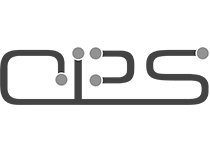BIMPUT – Digital feedback mechanisms for executing trades in the construction branch to ensure integration into the BIM lifecycle
Duration: 2021-2024

Sponsorship: “Handcraft 4.0: digital and innovative” in the “innovations for tomorrow’s production, services and work” program of the BMBF
Contact person: Dr. Thomas Ludwig – Kevin Krings – Sven Hoffmann
The construction branch has experienced steady growth in recent years, which continues to be characterized by an increasing demand for residential and commercial buildings. At the same time, buildings are increasingly being equipped with technical equipment. This requires intensive and detailed planning as well as execution of the work by all trades involved. To ensure this, construction projects are increasingly being carried out using the Building Information Modeling (BIM) method. The BIM method maps the complete life cycle of a building, from development, planning and realization through to operation and subsequent demolition, and aims to combine all the data generated in the process in a single model. However, the BIM method is used in just 10% of all construction projects in Germany and is often limited to the planning activities and less to the executing trades. This is mainly due to the time-consuming application and a large number of media discontinuities, which means that the BIM maturity level can often only be quantified as level 0 or 1. This contrasts with the BIM stage plan of the Federal Ministry of Transport and Digital Infrastructure (BMVI), which specifies the necessary levels of implementation of the BIM method for construction projects that fall under the responsibility of the BMVI. From the end of 2020, a BIM level I is to be achieved for all new projects to be planned.
With “BIMPUT”, craftsmen are to be provided with user-friendly feedback components adapted to the environment for handling and maintaining BIM data on site. For this purpose, a mobile application is being developed which, for the first time, enables craftsmen to adapt and enter 3D data in near-real time on the construction site. This will be made possible by new forms of visualization and adapted interaction concepts. Based on the maturity level of the craftsmen, the feedback component enables the digital integration of the craftsmen and eliminates the currently existing media breaks. This is complemented by a platform solution that enables uniform access to BIM data. The overall system enables better integration of the handcraft into the BIM method.




